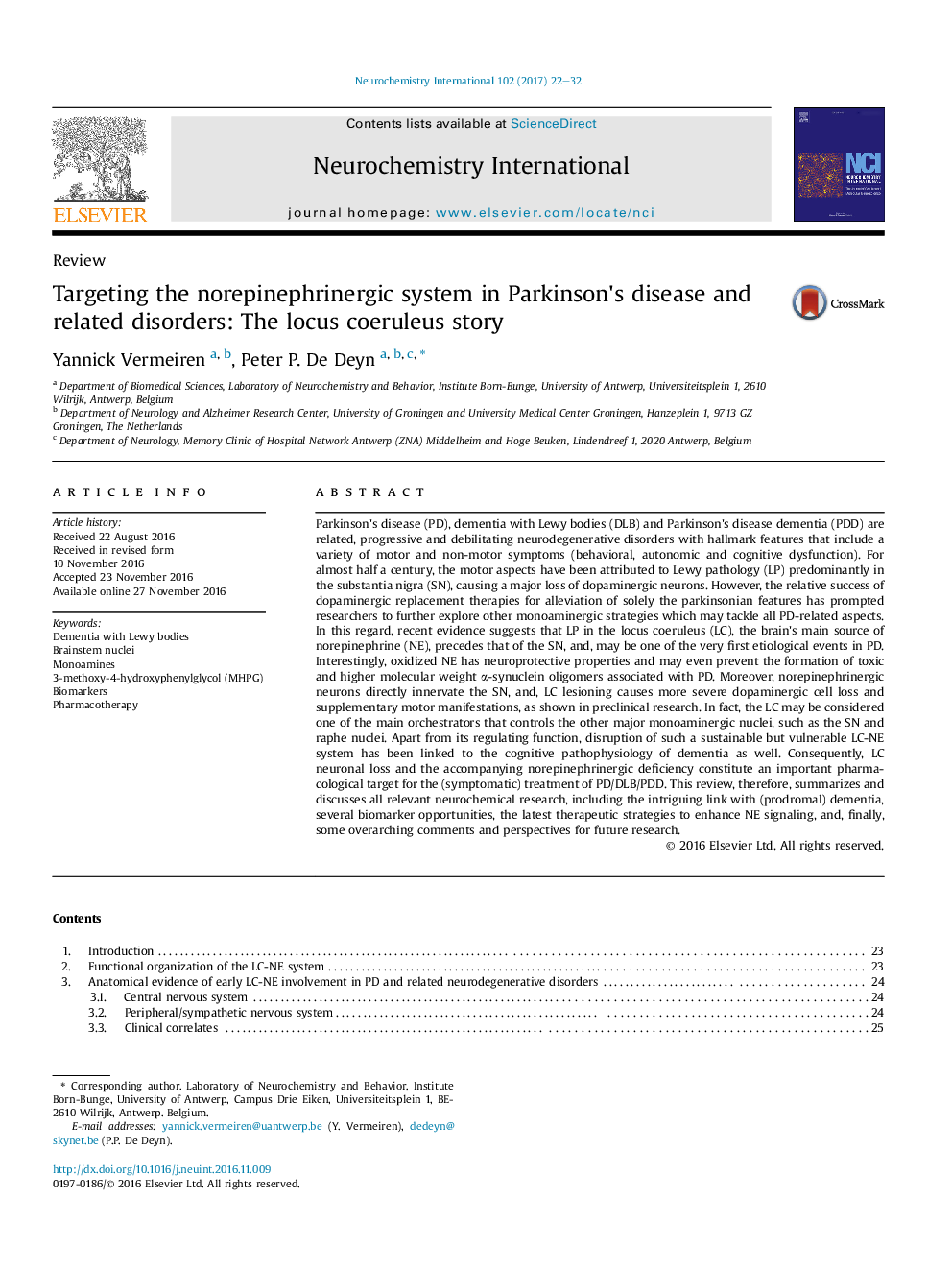| کد مقاله | کد نشریه | سال انتشار | مقاله انگلیسی | نسخه تمام متن |
|---|---|---|---|---|
| 5534625 | 1551273 | 2017 | 11 صفحه PDF | دانلود رایگان |
- Parkinson's disease (PD) is characterized by loss of locus coeruleus (LC) neurons.
- LC lesioning occurs earlier and to greater extent than that of the substantia nigra.
- There is a solid link between an altered LC-norepinephrine (NE) system and dementia.
- Peripheral/central MHPG, NE's main metabolite, may serve as an early marker for PD.
- Therapeutic strategies enhancing NE signaling may hold great potential to treat PD.
Parkinson's disease (PD), dementia with Lewy bodies (DLB) and Parkinson's disease dementia (PDD) are related, progressive and debilitating neurodegenerative disorders with hallmark features that include a variety of motor and non-motor symptoms (behavioral, autonomic and cognitive dysfunction). For almost half a century, the motor aspects have been attributed to Lewy pathology (LP) predominantly in the substantia nigra (SN), causing a major loss of dopaminergic neurons. However, the relative success of dopaminergic replacement therapies for alleviation of solely the parkinsonian features has prompted researchers to further explore other monoaminergic strategies which may tackle all PD-related aspects. In this regard, recent evidence suggests that LP in the locus coeruleus (LC), the brain's main source of norepinephrine (NE), precedes that of the SN, and, may be one of the very first etiological events in PD. Interestingly, oxidized NE has neuroprotective properties and may even prevent the formation of toxic and higher molecular weight α-synuclein oligomers associated with PD. Moreover, norepinephrinergic neurons directly innervate the SN, and, LC lesioning causes more severe dopaminergic cell loss and supplementary motor manifestations, as shown in preclinical research. In fact, the LC may be considered one of the main orchestrators that controls the other major monoaminergic nuclei, such as the SN and raphe nuclei. Apart from its regulating function, disruption of such a sustainable but vulnerable LC-NE system has been linked to the cognitive pathophysiology of dementia as well. Consequently, LC neuronal loss and the accompanying norepinephrinergic deficiency constitute an important pharmacological target for the (symptomatic) treatment of PD/DLB/PDD. This review, therefore, summarizes and discusses all relevant neurochemical research, including the intriguing link with (prodromal) dementia, several biomarker opportunities, the latest therapeutic strategies to enhance NE signaling, and, finally, some overarching comments and perspectives for future research.
Journal: Neurochemistry International - Volume 102, January 2017, Pages 22-32
